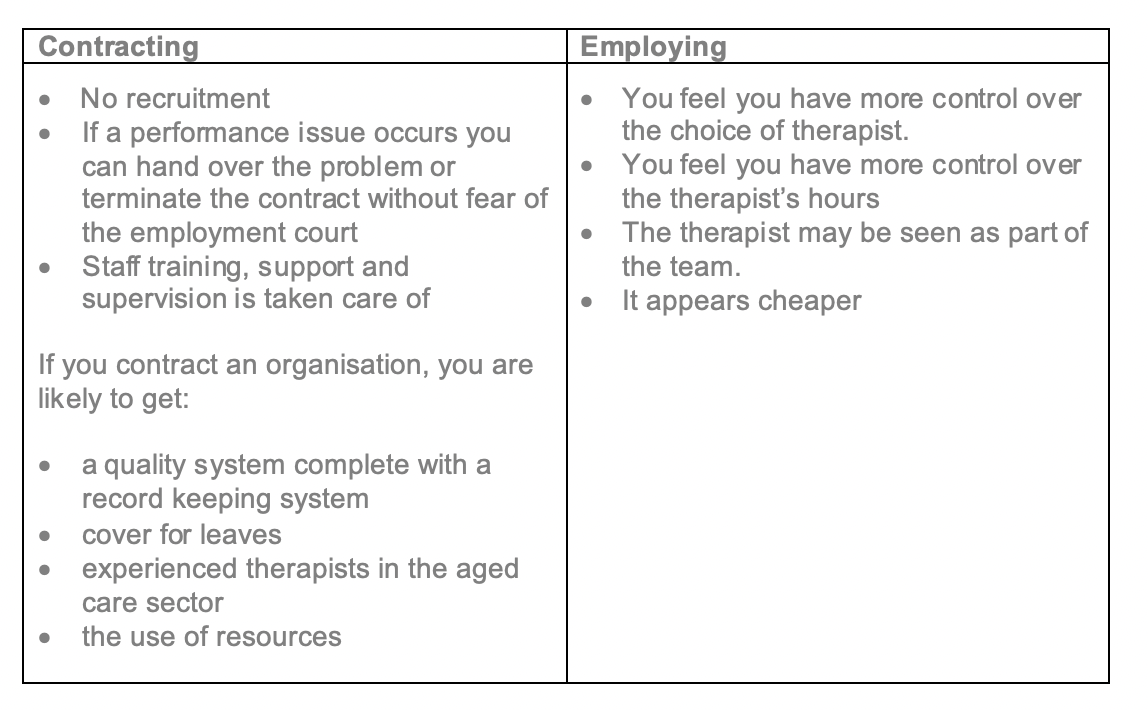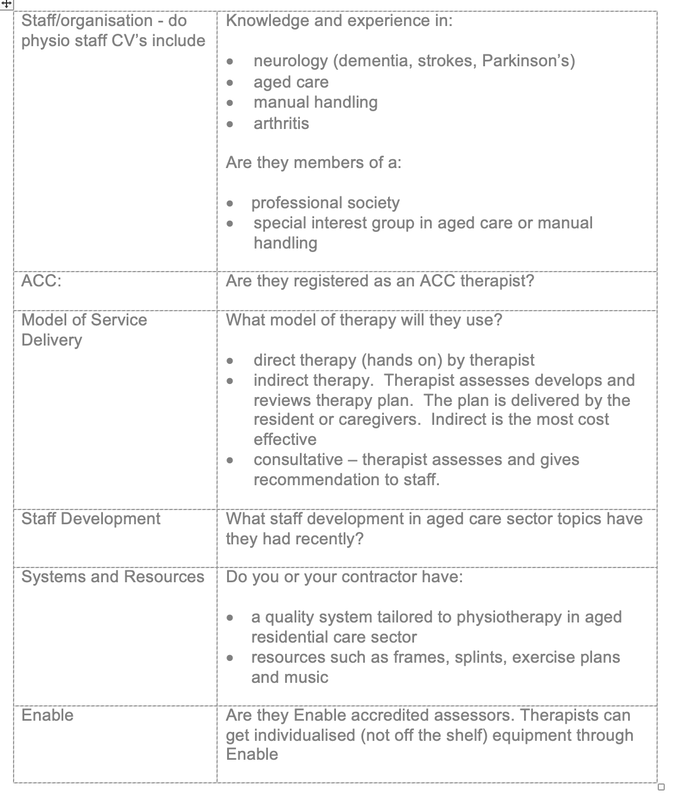|
What can you reasonably expect of your physiotherapist in aged care?  Aged care residential services have changed greatly, expectations are greater and funds are less generous. Once many aged care facilities provided maintenance and rehabilitation physiotherapy services, now the budget doesn’t allow for rehab. What is Maintenance Physiotherapy - assessment, planning and review of:
The implementation of most of these plans will be done by care staff not the physiotherapist. So what happened to rehabilitation? Most facilities can’t afford the intensive hours of individual physiotherapy to rehabilitate someone following a stroke or recovering from a fractured neck of femur. How might this be managed? Strokes – either gain service from the Health NZ. OR many families can pay privately for a burst of intensive physiotherapy. Fractured Neck of Femur – Treatment is subsidised by ACC for 12-16 treatments. Most physiotherapists will require a co-payment. The facility or family would need to pay for this. Individualised Wheelchairs? These can be very time consuming at up to 6-8 hours per individual. We would suggest it’s not the most equitable use of your budget. Health NZ has a wheelchair and seating team, a physiotherapist can access this. However there is often a long waiting list. OR your clients can pay privately for a physiotherapist to prepare for and organise an appointment at the Enable equipment clinics. How do you know your therapy services are value for money? It is hard to know if you’re purchasing quality. What can you, the purchaser of services, do to ensure you are purchasing good quality, value for money services? The same due diligence is needed when employing or contracting for physio services as you use for any of your staff. Things to consider  Efficiencies are made with experience, good systems and the use of an indirect therapy model. An expert in any area may cost more per hour however their experience brings savings in time, supervision and training costs as their knowledge is deep and at their fingertips. They get more work done per hour. Employing vs Contracting Many employers when deciding on whether to contract or employ make the mistake of comparing the contract hourly rate with the hourly rate. They forget to include other costs of employing eg leaves, ACC levies, staff training, support and supervision, insurances, Kiwi saver, general management and administration costs. When comparing costs the general rule of thumb is to multiply the recommended hourly wage rate by 2.5 and you get a rough estimate of the cost of employing. Additional costs to consider are:
 Comparing potential contractor’s price
Check:
Comments are closed.
|
AuthorShonagh O'Hagan Archives
July 2024
|


 RSS Feed
RSS Feed